Timmons: Biden’s Visit Shows the World That the U.S. Stands with the Ukrainian People
Washington, D.C. – National Association of Manufacturers President and CEO Jay Timmons released the following statement on President Biden’s visit to Ukraine:
“President Biden’s visit to Ukraine the week of the anniversary of Russia’s brutal and unprovoked invasion shows the world that the United States stands with the Ukrainian people and that our support is unwavering.
“The struggle in Ukraine is more than a war between two countries. It’s a struggle between freedom and tyranny. Manufacturers believe that there are two systems evolving in this world—one that enriches lives and lifts people up into freedom and prosperity, and the other that is oppressive and robs people of their liberty. We must continue to support the Ukrainian people, ensuring that critical supplies keep moving and investing in and rebuilding this war-torn country.
“Manufacturers in the U.S. have a long and proud history of standing firm in support of democracy, the rule of law, transparency, freedom and opportunity. The NAM and our members have demonstrated our unwavering support for Ukraine and its people, and the NAM spoke out firmly against the war with our Board of Directors passing unanimously a resolution at our meeting in March 2022. We supported sanctions against Russia, called for the suspension of Permanent Normal Trade Relations with Russia and mobilized humanitarian relief to Ukraine. Additionally, the NAM’s Emergency Response Committee has worked with NAM members and Project HOPE to support the resettlement of Ukrainians in the U.S. As an industry, we are committed to working with our partners to ensure that the Ukrainian people have the support they need to build a future of freedom and prosperity.”
-NAM-
The National Association of Manufacturers is the largest manufacturing association in the United States, representing small and large manufacturers in every industrial sector and in all 50 states. Manufacturing employs nearly 13 million men and women, contributes $2.81 trillion to the U.S. economy annually and accounts for 55% of private-sector research and development. The NAM is the powerful voice of the manufacturing community and the leading advocate for a policy agenda that helps manufacturers compete in the global economy and create jobs across the United States. For more information about the NAM or to follow us on Twitter and Facebook, please visit www.nam.org
How a Tax Change Will Strangle a Small Manufacturer’s R&D
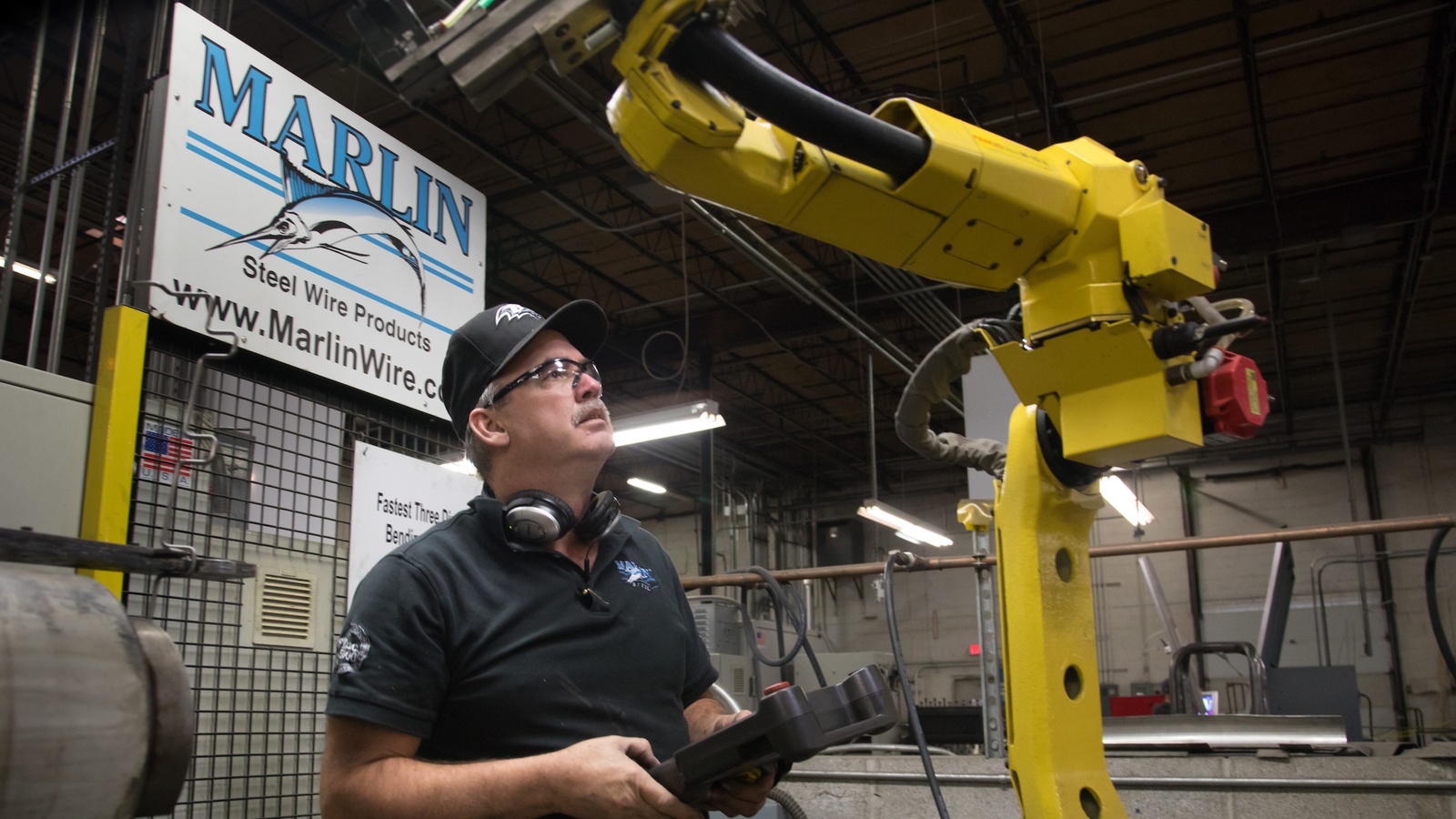
Marlin Steel Wire Products spent its first 30 years making bagel baskets. When Drew Greenblatt bought the custom wire and metal fabrication company in 1998, he thought it would be making bagel baskets for the next 30 years as well—but soon, international competition changed the math.
“Suddenly, China started manufacturing bagel baskets and shipping them to New York City for cheaper than I could get the steel,” said Greenblatt, Marlin’s president and owner. “But then, we got a phone call from an engineer at Boeing who needed an innovative, customizable basket. And that was the eureka moment.”
The shift: Greenblatt recognized that innovation would help him outcompete foreign companies that could manufacture products more cheaply.
- “We realized we couldn’t thrive in a commodities market,” said Greenblatt. “We had to come up with novel ways to make a basket so that it would make no financial sense to buy from China or Mexico.”
- “We wanted to be able to say to buyers, you must buy from the American innovative company, because we’re coming up with such slick ideas that our product blows the competition away.”
The growth: Today, Marlin Steel is nearly 30 times larger than it was when Greenblatt bought it and heavily invested in research and development.
- “Today, Marlin is 15% degreed mechanical engineers,” said Greenblatt. “We have chemical engineers. We’re coming up with the most innovative racks and systems out there.”
- “People are showing us their operations and asking us to reverse-engineer solutions that will work for them. And we’re doing it.”
However . . . A recent tax change threatens to throttle the company’s progress. Until about a year ago, businesses could deduct 100% of their R&D costs in the same year they incurred those expenses.
- But since last year, a tax policy change now requires businesses to spread their R&D deductions out over a period of five years, making it much more expensive to invest in innovation.
The impact: “Our taxes will be $600,000 higher than they should have been this year—we’ll pay four and a half times more on taxes,” said Greenblatt.
- “What that means is that it makes sense for us not to hire six more engineers. Not to buy three more press brakes [machines for bending metal parts] or hire people to work them. It’s incredibly shortsighted, a horrible policy screwup, and the ripple effects are massive.”
The scope: Greenblatt also emphasizes that the tax change will harm many small businesses.
- “People tend to focus on the bigger companies and how it will hurt them—and it will hurt them—but it will also hurt the little guy,” said Greenblatt. “And the little guy is the job creator in America.”
The last word: “American innovation—that’s our secret sauce,” said Greenblatt. “That’s how we’re going to grow jobs and pay people well and give good benefits and steady employment without layoffs. That’s how we’re going to beat a recession. We need to have the coolest, most innovative products in the world. For us, innovation is key.”
NAM Launches 2023 Competing to Win Tour
President and CEO Jay Timmons to Deliver the NAM State of Manufacturing Address
Washington, D.C. – The National Association of Manufacturers will kick off its 2023 Competing to Win Tour on Tuesday, Feb. 21, 2023, traveling to three states and visiting four manufacturing facilities along the way.
The tour will begin in Wisconsin, where NAM President and CEO Jay Timmons will deliver the 2023 NAM State of Manufacturing Address at Husco.
Throughout the week, Timmons will join local manufacturers, employees, media, community leaders and elected officials to discuss the challenging environment facing manufacturers and the urgent need for solutions on issues including immigration reform, permitting reform, workforce development, tax policy and more.
The tour comes as nearly two-thirds of manufacturers are concerned about the challenging economic environment characterized by inflation, supply chain disruption and the workforce crisis, according to the NAM’s latest Manufacturers’ Outlook Survey. More than three-quarters of respondents said pushing back against regulatory overreach should be the top priority of the 118th Congress.
“Our focus on this tour is telling the story of resilient, modern manufacturing—and the tools we need from policymakers to continue leading our economy forward and making the world a better place,” said Timmons. “To unleash our full potential, we need to reinstate critical tax provisions, a smarter, balanced approach to regulations, immigration reform and significant permitting reform, and reject top-down air regulations that cost jobs and snarl supply chains.”
For more than a decade, the annual NAM State of Manufacturing Address has focused the nation’s attention on the industry that is the backbone of the American economy, highlighting the 13 million men and women who are building our future.
The NAM has frequently traveled the country, bringing policy discussions and conversations about the future of work to shop floors, schools, economic clubs, televisions studios, the White House and more.
At a time when the future of work is top of mind for workers and thought leaders alike, the tour will also spotlight the industry’s rapid transformation, while also focusing on manufacturing’s well-paying careers, the industry’s diverse workforce and the real-world solutions for manufacturing’s continued growth.
Tour events will take place in Wisconsin, Indiana and Louisiana. Details are as follows:
Tuesday, Feb. 21 // Wisconsin
8:30 a.m. – 10:30 a.m. CST
Husco
2239 Pewaukee Road
Waukesha, Wisconsin 53188
11:00 a.m. – 12:00 p.m. CST
Waukesha County Technical College
800 Main Street
Pewaukee, Wisconsin 53072
Wednesday, Feb. 22 // Indiana
9:00 a.m. – 11:00 a.m. EST
INCOG BioPharma Services
12050 Exit 5 Parkway
Fishers, Indiana 46037
Timmons will be joined by Sen. Todd Young (R-IN)
Thursday, Feb. 23 // Louisiana
8:30 a.m. – 10:00 a.m. CST
Laitram
200 Laitram Lane
Harahan, Louisiana 70123
2:00 p.m. – 3:30 p.m. CST
McIlhenny Company
Highway 329
Avery Island, Louisiana 70513
MEDIA RSVP: Members of the media interested in covering the tour or attending an event should contact [email protected].
-NAM-
The National Association of Manufacturers is the largest manufacturing association in the United States, representing small and large manufacturers in every industrial sector and in all 50 states. Manufacturing employs nearly 13 million men and women, contributes $2.81 trillion to the U.S. economy annually and accounts for 55% of private-sector research and development. The NAM is the powerful voice of the manufacturing community and the leading advocate for a policy agenda that helps manufacturers compete in the global economy and create jobs across the United States. For more information about the NAM or to follow us on Twitter and Facebook, please visit www.nam.org.
NAM to FAR Council: Rescind Proposed Climate Rule
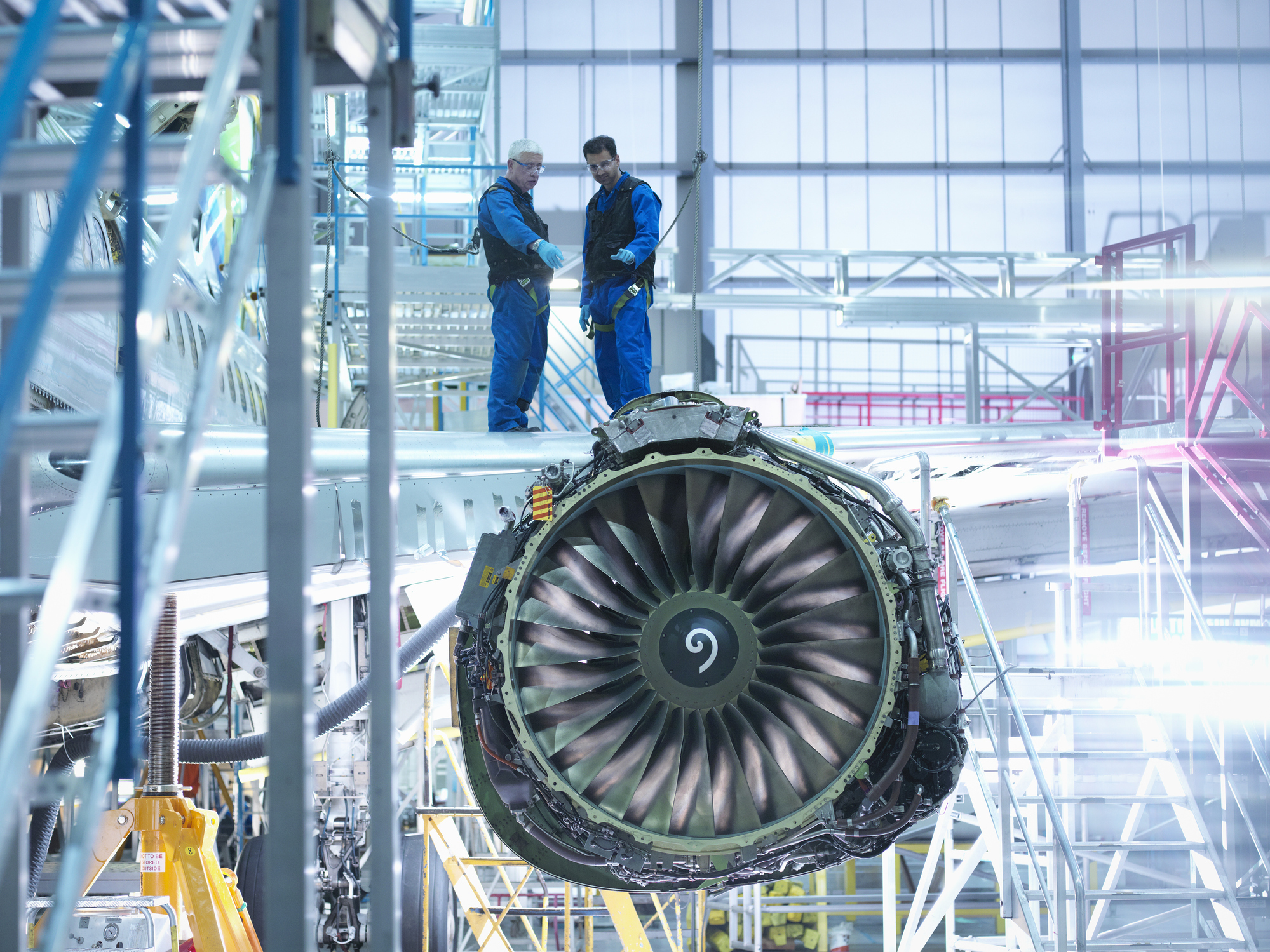
A draft rule to force federal contractors to make specific and detailed climate disclosures is burdensome, unrealistic and costly to manufacturers. It should be rescinded completely, the NAM told the Federal Acquisition Regulatory Council this week.
The background: In November, the FAR Council—which is composed of the Defense Department, the General Services Administration and NASA—proposed a rule to require climate disclosures from federal contractors, many of whom are manufacturers. The proposed rule would require contractors with more than $50 million in annual federal contract obligations to:
- Disclose their greenhouse gas emissions, including so-called Scope 3 emissions (those attributable to the suppliers and customers throughout a company’s value chain);
- Set targets to reduce their greenhouse gas emissions within a decade (including Scope 3 emissions) based on standards set forth by a third-party nonprofit organization, the Science-Based Targets initiative, and get the targets validated by SBTi; and
- Disclose their climate-related financial risks pursuant to a framework written by a second nonprofit group, the Task Force on Climate-Related Financial Disclosures, and submit those risk disclosures to yet another nonprofit (CDP, formerly the Carbon Disclosure Project).
Why it’s a problem: Compliance with the proposed rule would be difficult, if not wholly unfeasible, prohibitively expensive and time-consuming, NAM Managing Vice President of Tax and Domestic Economic Policy Chris Netram told the FAR Council. It would also impact small businesses within federal contractors’ supply chains given the rule’s focus on Scope 3 disclosures and target setting.
- “The proposed rule would impose significant costs on manufacturers as they work to meet the complex—and in many cases impractical or impossible—requirements of the rule,” Netram said.
- “As a result, manufacturers providing critical goods and services to the federal government, as well as the businesses throughout their supply chains, will be directly and adversely impacted … The national security of the United States could likewise be harmed, as critical contractors could be disqualified from supplying the military, and the required disclosures could expose sensitive information to America’s adversaries.”
What can be done: The FAR Council should rescind the proposed rule in its entirety, Netram said, but if it is intent on making changes, “it must re-propose a rule with substantial revisions to make its requirements more cost-effective and workable for federal contractors and more narrowly tailored to the actual climate-related risks to which the federal government is exposed.”
NAM to EPA: Reverse WOTUS Rule
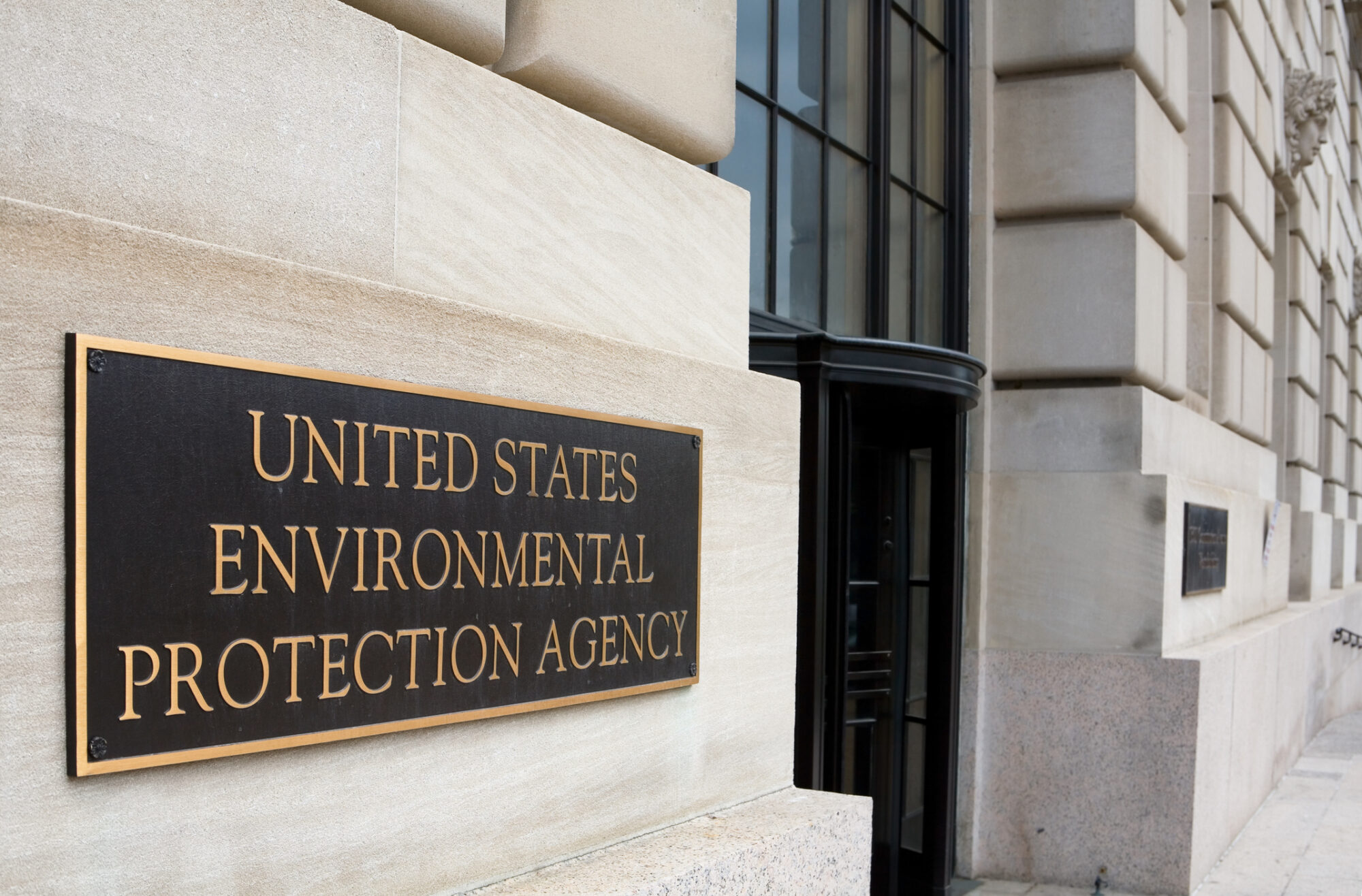
The Environmental Protection Agency’s recently issued rule governing regulation of “navigable waters” is unnecessary, confusing and inconsistent—and the NAM stands ready to work with Congress to overturn it.
The background: In December, the EPA and the U.S. Army Corps of Engineers announced the new regulation, which repealed the Navigable Waters Protection Rule and altered the definition of “Waters of the United States.”
- This month, House Transportation and Infrastructure Committee Chairman Sam Graves (R-MO) introduced a joint resolution of disapproval of the rule under the Congressional Review Act. An identical measure was introduced in the Senate.
- The NAM this week hailed the congressional moves. “Manufacturers welcome action from Congress to challenge the EPA’s proposed WOTUS Rule,” said NAM President and CEO Jay Timmons.
What’s going on now: Ahead of a Transportation and Infrastructure Committee hearing Wednesday, NAM Senior Director of Energy and Resources Policy Nile Elam urged the “educat[ion of] the public and policy stakeholders regarding the immense permitting regulatory efforts necessary under local and state jurisdictions, and the need for a complementary WOTUS rule that advances permitting protections at the federal level while providing certainty for the regulated community.”
- Though many Supreme Court decisions have “touched on” the definition of navigable waters, neither the court nor the EPA has clarified sufficiently, Elam told Water Resources and Environment Subcommittee Chairman David Rouzer (R-NC) and Ranking Member Grace Napolitano (D-CA).
- The new rule also “expands federal jurisdiction beyond traditional navigable waters,” Elam said. “Because of these expansions and ambiguous terms, the careful balance between local and state regulators is unpredictable and can leave permit seekers with little guidance, aside from the need for more time and money to achieve their permitting requests.”
What should come next: Congress must work with stakeholders, the EPA and the Corps on creating clear, predictable and common-sense WOTUS regulations, Elam told the committee. Doing so will “enhanc[e] manufacturers’ ability to deliver their goods, expand their operations and grow their workforce.”
NAM Pushes Back on Harmful New Air Regulations
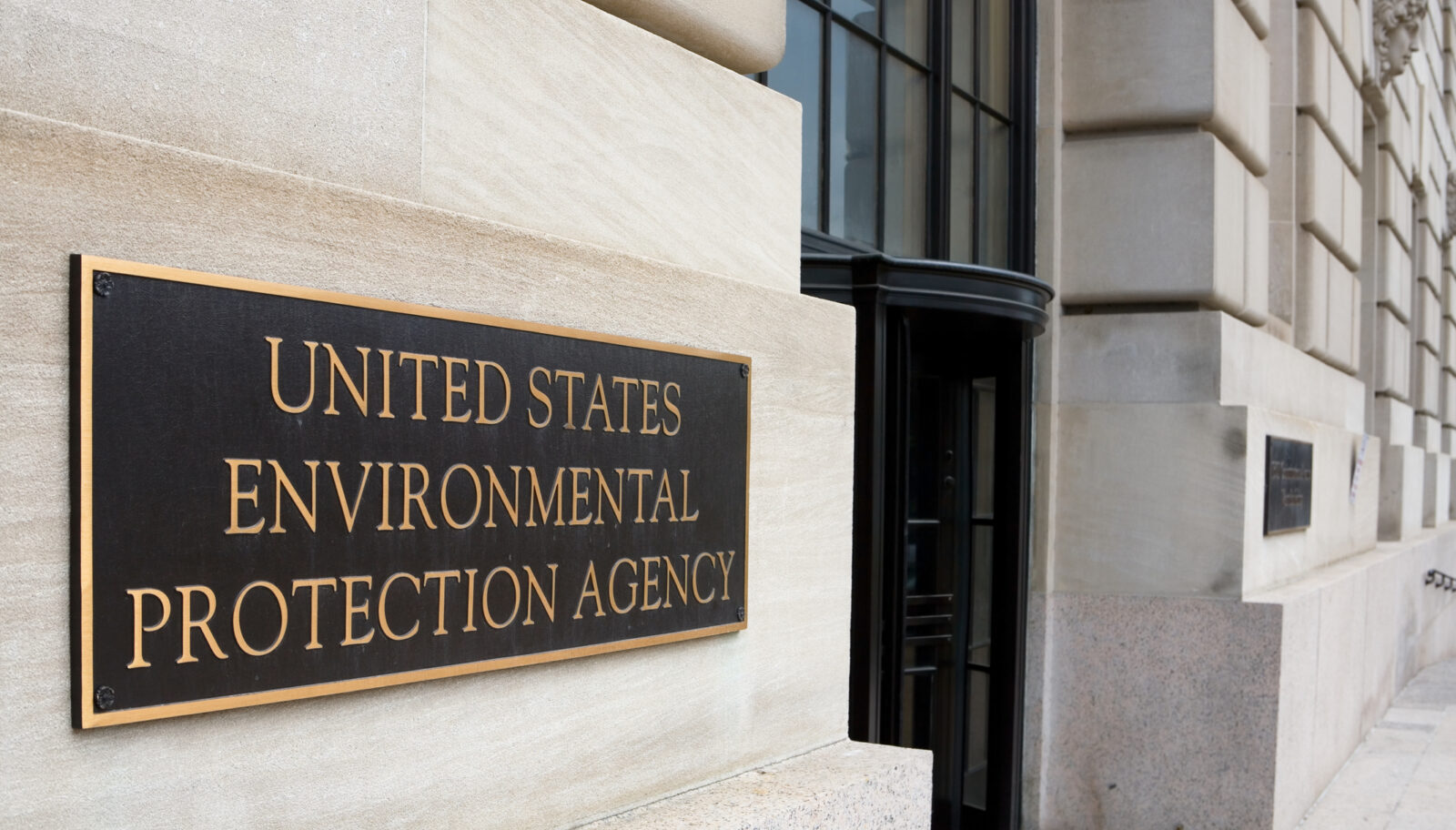
Manufacturers have long led the way in efforts to reduce air pollution and improve air quality. Yet, new proposed regulations from the federal government will work against these efforts instead of bolstering them, stymying critical progress and destabilizing economic growth at a time when both are more important than ever.
The challenge: The Environmental Protection Agency is considering a new rule that would impose stricter air standards on particulate matter known as PM2.5 (i.e., particles that measure two and a half micrometers or less in diameter). This rule would enact significant top-down restrictions, forcing manufacturers to change their operations abruptly and without any support.
The reality: For years, manufacturers across all sectors have been developing smart, innovative ways to use energy, water and other resources more sustainably—all while boosting economic growth and creating good jobs at the same time.
- Today, manufacturing in the U.S. is cleaner and greener than at any other time in history, largely due to a revolution in how manufacturers produce, use and recycle energy and resources.
- Across the board, levels of major pollutants have declined dramatically over the past few decades. Thanks to existing regulations and a culture of innovation, the U.S. is far outpacing global competitors in environmental stewardship.
By the numbers: According to the EPA, the U.S. reduced six common pollutants covered by National Ambient Air Quality Standards, including PM2.5, by 78% between 1970 and 2020. In fact, PM2.5 levels alone have dropped a full 44% since 2000.
The impact: These new regulations could be devastating for manufacturers and for the climate. Here are just a few of the negative repercussions:
- An additional regulatory burden on businesses will drain resources from innovative manufacturers, posing additional hurdles to the investment in research and development that fuels progress in energy efficiency and climate action.
- Making permitting harder could also jeopardize new clean energy projects that America needs to address climate change.
- The standards will hinder onshoring, resulting in continued manufacturing abroad—which is less clean than manufacturing in the U.S. The EPA’s proposal undercuts U.S. competitiveness and will not further the goal of global emissions reduction.
- New regulations could damage an already-slowing economy, increasing costs and constraining job growth at a time when Americans are grappling with record inflation.
Our view: Rather than imposing new and unnecessary obligations on manufacturers, the federal government should focus on enforcing the strong regulations that are already in place and give manufacturers the space to find better solutions.
- “The EPA’s announcement . . . [about reconsidering] the PM 2.5 standard will only further weaken an already slowing economy,” said NAM President and CEO Jay Timmons. “Let manufacturers do what they do best: innovate and deploy modern technologies to protect the environment, while creating jobs and strengthening the economy.”
NAM in action: The NAM is rallying manufacturers to speak out against the EPA’s proposal and calling on Congress to oppose these harmful regulations.
- Manufacturers can show their support by sending an email to decision makers in Washington, explaining the real impact of this damaging proposal and urging them to stand up against unnecessary regulations.
Join in: There is an EPA hearing to discuss the proposal on Feb. 21. To participate, be sure to sign up soon—the registration deadline is Feb. 16.
Timmons: America’s Success and Leadership Depend on a Strong, Competitive Manufacturing Industry
Washington, D.C. – National Association of Manufacturers President and CEO Jay Timmons released the following statement in response to President Biden’s 2023 State of the Union address:
“President Biden rightly celebrated the significant growth and job creation that manufacturers have achieved in these past two years. Indeed, more manufacturing jobs have been created in the first two years of the Biden administration than at any point since the Reagan administration. Like his recent predecessors, he recognizes manufacturing’s vital role in our economy and our country. America’s success and leadership depend on a strong, competitive manufacturing industry.
“The President should be commended for the historic, bipartisan accomplishments of the past two years—including the infrastructure law and the CHIPS and Science Act. These measures are already making life better and spurring new manufacturing jobs. We agree with President Biden that there is now an urgent need to build on that progress by tackling immigration reform in a smart, bipartisan way. There are millions of people ready to work in the U.S., and manufacturers have hundreds of thousands of unfilled jobs. Not only is the broken immigration system creating a border crisis, but it is also standing in the way of a stronger economy for every American.
“However, the President misses the mark in not recognizing that the historic tax reforms of 2017 and the previous administration’s efforts to promote regulatory certainty helped lay the foundation for the recent success in creating jobs, increasing investment and raising wages. Instead of the Biden administration’s misguided suggestions for restrictions on pharmaceutical innovation and for destructive tax increases, Congress should immediately reinstate critical tax deductions for the costs of research, machinery purchases and key business investments. Restoring these tools is essential to keep up the pace of manufacturing job creation and to out-innovate and outcompete China. And to truly unleash manufacturing investment, fully realize the potential of the infrastructure law and achieve energy security in America, we need a smarter, balanced approach to regulations and significant permitting reform so that projects don’t languish for years in a bureaucratic mess just waiting for government approvals. After all, manufacturers are already making great strides in reducing emissions. Now is not the time to add top-down air regulations that will cost us jobs and snarl supply chains.
“The State of the Union address is one of the sacred traditions of our democracy. And as we approach the one-year mark of Russia’s war on Ukraine, we are reminded just how precious those traditions and our institutions are. Democracy is the foundation of the values that keep our industry strong and have made America exceptional—free enterprise, competitiveness, individual liberty and equal opportunity. And that is why manufacturers stand firm in our belief that democracy must be respected, protected and defended at home and abroad.”
Background: The NAM’s “Competing to Win” policy agenda for manufacturing competitiveness can be found here. Its in-depth proposal for immigration reform, “A Way Forward,” is available here. In the NAM’s most recent Manufacturers’ Outlook Survey, two-thirds of manufacturers said that immigration reform should be a priority for the 118th Congress.
-NAM-
The National Association of Manufacturers is the largest manufacturing association in the United States, representing small and large manufacturers in every industrial sector and in all 50 states. Manufacturing employs nearly 13 million men and women, contributes $2.81 trillion to the U.S. economy annually and accounts for 55% of private-sector research and development. The NAM is the powerful voice of the manufacturing community and the leading advocate for a policy agenda that helps manufacturers compete in the global economy and create jobs across the United States. For more information about the NAM or to follow us on Twitter and Facebook, please visit www.nam.org.
Ultragenyx Fights for Cures Amid Rising R&D Costs

About 30 million people in the United States have a rare disease, according to the National Institutes of Health, which equates to about one in every 10 individuals. Approximately 95% of these rare diseases have no treatment at all—and Ultragenyx, a biopharmaceutical company focused on new and effective therapies for patients with rare and ultra-rare diseases, is working to change that.
- “In the aggregate, rare is not that rare,” said Ultragenyx Executive Director of Public Policy and Public Affairs Lisa Kahlman. “Half of those 30 million people are children. It’s a huge unmet medical need.”
Founded in 2010, Ultragenyx has four commercial products, with about 20 more in pre-clinical and clinical development. But a new change in tax policy poses a very real threat to Ultragenyx’s ability to develop as many treatments for rare diseases as possible.
The issue: Until a year ago, businesses could deduct 100% of their R&D expenses in the same year they incurred the expenses. Starting in 2022, however, a tax policy change requires businesses to spread their R&D deductions out over a period of five years, making it more expensive to invest in growth and innovation. For research-heavy companies like Ultragenyx, that change could divert funds intended for the development of therapies toward tax obligations.
- “Ultragenyx is different,” said Kahlman. “There are a lot of companies that do some work in rare diseases, but usually that’s only a fraction of what they do. We’re exclusively built to focus on rare and ultra-rare diseases, and that requires research.”
The impact: As a small, largely precommercial start-up company that focuses on research, Ultragenyx spends about 70% of its total operating expenses on R&D. In 2021, Ultragenyx spent approximately $497 million on R&D—nearly $150 million more than it earned in revenue.
- If the tax change stands, the company’s financial statement losses, which approximate decreases in the company’s cash reserves, will be adjusted for tax purposes to reflect significant taxable income, resulting in very large tax liabilities over a short period of years.
- This will occur during late stages of the company’s development programs just when costs escalate quickly. Altogether, money will be diverted to taxes and away from critical development programs at precisely the wrong time.
The human cost: If Ultragenyx and other research-heavy biotech companies that are focused on developing treatments for rare diseases must divert funds away from development and toward covering tax obligations, patients living with rare diseases will have even more limited options.
The bottom line: “The therapies we’re developing are really transformational, but in some cases, there might be only about 200 patients in the developed world with one of these diseases—so if we don’t have the money for R&D, there won’t be any incentive for anyone else to develop treatments,” said Kahlman. “For these patients, there is no alternative.”
Our move: At the NAM, we’re pushing Congress to reverse this change and allow manufacturers to invest in jobs, communities and innovation. Learn more and take action at www.nam.org/protect-innovation.
NAM to FTC: Noncompete Rule Would Harm Manufacturers
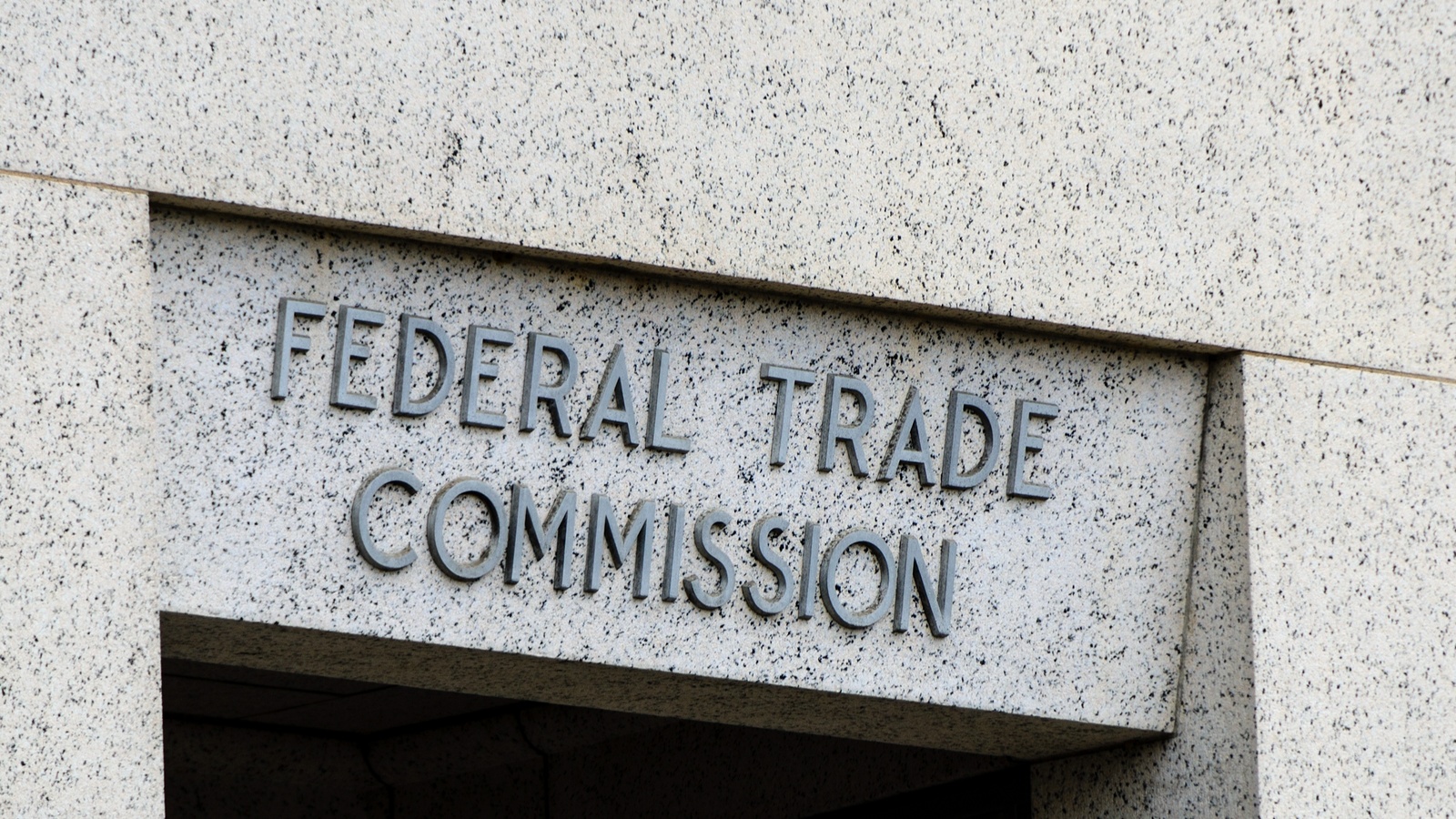
The NAM is urging the Federal Trade Commission to extend the comment period on its recently proposed rule to ban noncompete agreements in the workplace, citing the rule’s broad economic impact and significant legal implications.
The background: On Jan. 5, the FTC proposed a rule that would prohibit employers from imposing noncompete agreements on workers, calling such clauses “an unfair method of competition” and saying they prevent the forming of new businesses and result in lower wages for all workers.
What the NAM is doing: The NAM opposes the proposed change, and the association joined a coalition of other business groups this week requesting that the public comment period, which runs through March 20, be extended by 60 days. The reason: the proposal would have far-reaching legal consequences for manufacturers, including risks to intellectual property.
- “A sufficient comment period is needed to ensure the regulated community can fully assess [the rule’s] effects,” the coalition told FTC Secretary April Tabor. “Moreover, there are significant legal questions that must be addressed by commenters.”
- “Among the issues raised by the FTC action is whether the Commission has the legal authority to issue such a rulemaking, the rule’s potential preemption of the numerous state laws and regulations on this issue, and how such preemption will alter the regulated community’s legal obligations.”
Working for manufacturers: The NAM is exploring all possible avenues, including congressional oversight and litigation, to mitigate the impacts of the proposed rule. Litigation is contingent on financial support from NAM members, as all of the NAM’s activities in the courts are funded outside of member dues.
NAM to Congress: Reverse Course on Harmful Tax Changes
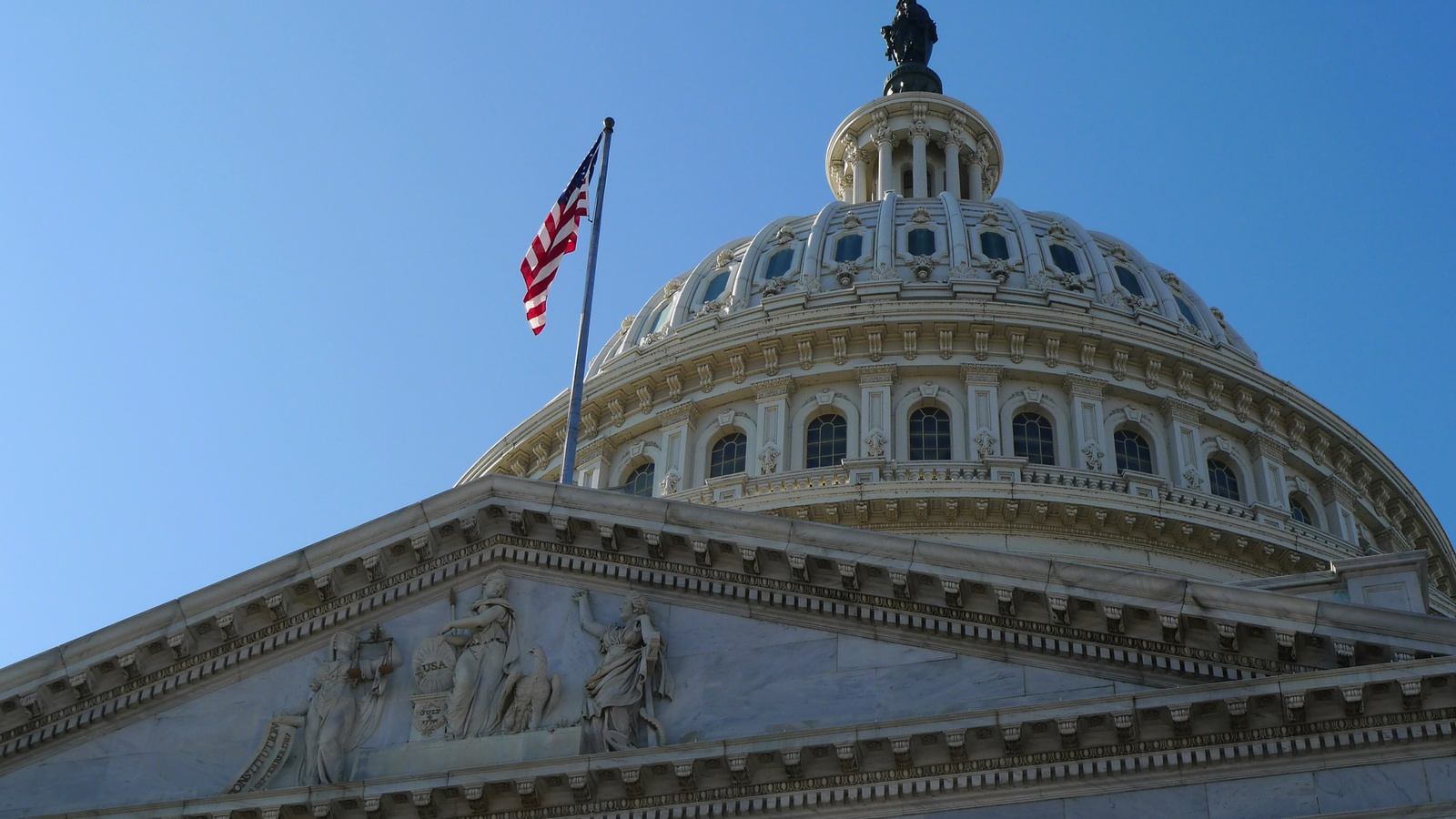
Recent tax law changes that increase the costs of research, machinery purchases and key business investments will harm manufacturers “at a time when 62% of manufacturing leaders already expect a recession in 2023,” the NAM told congressional leaders Monday.
What’s going on: Beginning in 2022, businesses that had for decades been allowed to immediately deduct research and development expenses had to begin amortizing these costs over years, making innovation more expensive.
Why it’s important: The change creates a competitive disadvantage for manufacturers in the U.S., as “China, which has made no secret of its ambition to become the world leader in advanced manufacturing, currently provides a 200% deduction for R&D expenses for manufacturers,” NAM Senior Vice President of Policy and Government Relations Aric Newhouse told the Senate Finance Committee and the House Ways and Means Committee.
What can be done: Congress should reverse course to avoid harming manufacturers, Newhouse said. Here’s what lawmakers should do:
- Reverse the R&D amortization provision: Policymakers should allow manufacturers to go back to being able to deduct 100% of their R&D expenses in the same year in which they are incurred.
- Protect interest deductibility: Congress must reverse the new, stricter limit on interest deductibility (the earnings before interest and tax, or EBIT, standard) and return to the “standard in place prior to 2022, which was based on earnings before interest, tax, depreciation and amortization.”
- Return to full expensing: Lawmakers should go back to allowing businesses to take 100% deductions for equipment and machinery purchases in the tax year of purchase.
The last word: By making these changes, Newhouse said, “Congress can help ensure that manufacturers, especially small manufacturers, can continue to invest in their operations, their workers and America’s future.”
